Live a Satisfying Life with Emotional Agility
Emotional agility and emotional intelligence are hot buzz words. But what do they mean? And how can you apply them to build a satisfying life?
In a nutshell, one concept focuses inward to help a person make decisions based on individual values. The other concept focuses on interpersonal skills to improve leadership and group effort. For teachers and administrators, both are applicable. In some ways, you could say one concept is nested inside of the other one.
What Does Emotional Intelligence Mean?
The notion of emotional intelligence was fabricated in 1990 by John D. Mayer (UNH) and Peter Salovey (Yale). These two psychology professors sought to highlight the concept of accurately perceiving and suitably managing emotions; personal emotions and the emotions of associates. Part of their philosophy is understanding the sending and receiving of emotional signals.

In 1998, psychologist Daniel Goleman (Rutgers) rephrased emotional intelligence to make it applicable to management. The most effective executives are not always the most knowledgeable about a given subject but are the most skilled at relating to and engaging personnel. For the benefit of the team, an executive should have a good balance of the following five emotional skills:
- Self-awareness
- Self-regulation
- Empathy for associates individually and collectively
- Motivation or passion to do things well
- Team-building skills
What Does Emotional Agility Mean?
Emotional intelligence is about relationship building to promote better team effort, efficiency, and outcome. Emotional agility, on the other hand, provides tools for self-awareness and, hence, self-regulation. Emotional agility promotes personal growth derived from aligning thought patterns and actions to the values that make a person tick.
This process is about exploring, not ghosting personal emotions. Past experiences may make us think we need to dismiss negative emotions, plant a smile on our faces, and focus on positive thoughts. Looking for and expressing gratitude can bring comfort and peace. However, research shows forcing a positive outlook perpetuates internal judgment, causing toxic positivity to take a toll on mental health.
Emotional agility means taking a step back to see things in an unemotional way before taking action. It reminds me of the Sherlock Holmes movies starring Robert Downy, Jr. In a split second, Sherlock Holmes envisions every move in slow motion and the probable outcome. It is the space between feeling an emotion and implementing a chosen reaction.
Psychologist Susan David wrote about emotional agility in a 2016 book entitled Emotional Agility: Get Unstuck, Embrace Change, and Thrive in Work and Life. David’s premise is that as we take time to view our emotions without judgment, we align our thought patterns and actions with our values. Living inside our values brings peace because we are connected to what matters most to us.
From a psychological standpoint, obeying rules (written, imagined, or implied) not in line with our values creates emotional rigidity. Emotional rigidity keeps a person stuck in negative thought patterns. David suggests this is because we get hooked on those thought patterns and beat ourselves up internally.
Steps to Emotional Agility
David offers four stepping stones to manage negative feelings and thoughts, free yourself from emotional hooks, and thrive. The four steps are:
- Show Up: Give yourself space or time to experience and name emotions without self-judgment.
- Step Out: Detach from and observe the emotions and thoughts as if you were a curious outsider with options and possibilities.
- Walk Your Why: Take the long view to align actions and emotional reactions to your core values.
- Move on: Tweak habits or your normal emotional reactions to better incorporate your values.
Basic Emotions
All the emotions you can feel are summed up into seven basic emotions by the psychologist Paul Ekman. They include joy, surprise, anger, sadness, fear, contempt, and disgust. Looking at this list, we might believe that joy is the only positive emotion in life, given surprise could be either good or bad.
However, when we take a step back, we realize personal growth comes from uncomfortable and even dark emotions. Joy is sublime. It is the pinnacle. But it is drudging through the pain of sadness, fear, contempt, and disgust that helps us evolve. We come out the other side with more compassion. More empathy. And better able to connect to and enhance life moving around us.

In my personal journey, I sought happiness through movement. When I physically collapsed in my late 30s, I was forced to step back and explore my ever-present anger. I found sadness and fear to be the root of my anger. Sad that some things in my life did not turn out the way I envisioned them. And the fear of what my future would entail.
As I allowed myself to feel these dark emotions and the experiences that shaped them, I found emotional healing and peace. I changed. Rather than looking at life as a big to-do list, I slowed down and sought to savor it.
I think I actually saw and appreciated the blue sky, the cardinals, and the leaves on the trees for the first time in years. Allowing myself to experience the negative emotions led to a more contented life. It led to discovering joy.
Determining Core Values
The heart of emotional agility is aligning our decisions with our core values. That means we need to understand what really makes us tick. David defines core values as what matters most to us, not a set standard based on anything outside of ourselves. Once we deeply understand what brings us satisfaction and joy (our values), we can step back and seek to align our actions with those core values to help us thrive.
Nature is one of my core values. I love camping, hiking, biking, and canoeing. I will thrive if I align my current choices with this core value. The long-term view helps me make consistent daily decisions involving diet, exercise, and rest. I know if I do not maintain my health, aching joints with rob me of the ability to actively enjoy nature.

David sites a study involving middle schoolers. In the study, underprivileged minority middle schoolers were given ten minutes to write down what mattered most to them. The responses varied widely. However, what mattered was defining and establishing what mattered to them personally and what connected them to the world.
By exploring and defining what made them tick individually, the students significantly improved their GPAs. And even more astonishing, the effect followed many students into high school.
What Matters to You?
Does your relationship with someone matter more than the crumbs they might leave on the kitchen counter? Does the ability to wake up refreshed and ready to take on the day matter more than the late-night snack that will keep you up with indigestion?
Questions like these could take up pages. Exploring your personal core values will provide you with the regulation skills you seek because decisions you make will naturally align with what matters most to you. Instead of being stuck in circling patterns, emotional agility helps you align your daily choices with the long view to provide insight, compassion, and ultimately satisfaction.
Teacher Power Powers Teachers

Thank you for being you. Thank you for showing up every day ready to engage and teach the future. Teaching takes patience and energy. Teacher Power Energy Drinks provide a healthy boost to energize any situation.
Our powdered energy drinks are sugar-free, keto-friendly, and vegetarian. One scoop contains a full array of B Vitamins and 100 mg of stimulating caffeine. Try Teacher Power Energy Drinks today!
And see our website for products, teaching tips, book reviews, self-help ideas, and more. You got this with Teacher Power in your corner.
The content of Teacher Power’s website is for information only, not advice or guarantee of outcome. Information is gathered and shared from reputable sources; however, Teacher Power is not responsible for errors or omissions in reporting or explanation. No individuals, including those taking Teacher Power products, should use the information, resources or tools contained within to self-diagnosis or self-treat any health-related condition. Teacher Power gives no assurance or warranty regarding the accuracy, timeliness or applicability of the content.
By: Jae O. Haroldsen
Sources:
Ovans, Andrea. “How Emotional Intelligence Became a Key Leadership Skill.” Harvard Business Review. 2015. https://hbr.org/2015/04/how-emotional-intelligence-became-a-key-leadership-skill
Gu, Simeng et al. A Model for Basic Emotions Using Observations of Behavior in Drosophila.” Frontiers. 2019. https://www.frontiersin.org/articles/10.3389/fpsyg.2019.00781/full
Ford BQ, Lam P, John OP, Mauss IB. The psychological health benefits of accepting negative emotions and thoughts: Laboratory, diary, and longitudinal evidence. J Pers Soc Psychol. 2018 Dec;115(6):1075-1092. doi: 10.1037/pspp0000157. Epub 2017 Jul 13. PMID: 28703602; PMCID: PMC5767148.
David, Susan. Emotional Agility: Get Unstuck, Embrace Change, and Thrive in Work and Life. AVERY. 2016.


1 comment
I prefer the stick packs instead of the tubs. A much better way to make my drink. Best when I refill my drink, and I do not have to carry around the tub! Also, I have eliminated soda from my diet!